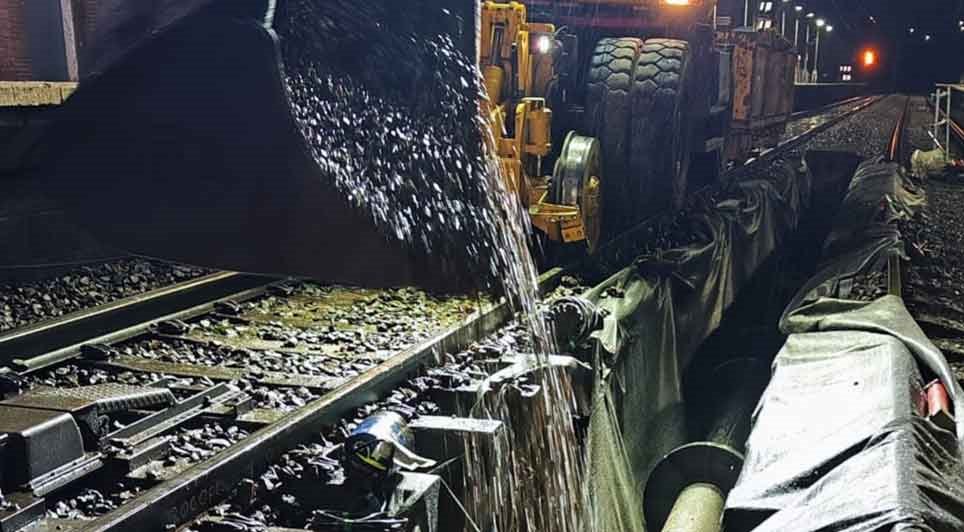Laboratory tests currently used to check the fire safety of building materials have been described as "utterly inadequate", by the Fire Protection Association (FPA).
The FPA was commissioned by the Association of British Insurers (ABI) to carry out a series of carefully controlled experiments recreating more realistic building conditions than those in which the standard tests are done, in an effort to measure what difference these factors could make in the event of a fire.
The real-life factors overlooked by the official testing regime include:
• Test fires which are only made up of wood. In modern blazes, around 20% of the materials involved are plastic.
• Cladding materials are sometimes tested as a sealed unit, whereas when fitted on a building they often include gaps, and cover a far more extensive area.
• Materials tested will be in manufacturer condition, but during their actual use will often be pierced by things such as vents or ducts.
In its submission to the Hackitt review, the ABI called for an end to the use of all but non-combustible materials in construction, and a reformed testing regime that replicates real world conditions to provide genuine evidence of how materials perform in a fire. The results of these latest tests all reinforce the importance of urgent reform.
Huw Evans, Director General of the ABI, said: "Dame Judith Hackitt's important work post-Grenfell has already recognised the building control system is broken. This latest research is yet more evidence that fundamental reform is needed to keep our homes and commercial premises safe from fire. It is a matter of urgency that we create the right testing regime that properly replicates real world conditions and keeps pace with building innovation and modern design."
Tests conducted by the FPA include:
THE ISSUE: Test fires are only made up of wood. In modern blazes, around 20% of the materials involved are plastic.
Test 1: Two fires were created with the same energy content, one purely built out of wood, the other containing 20% plastic.
The results: The flames created by the fire containing plastic had a flame length around 1 metre longer than the wooden fire; the temperatures involved were 100 degrees hotter and still increasing when the plastic-containing fire had to be extinguished because it was exceeding lab safety conditions.
The implications: As well as the ability of the fire containing plastic to spread faster and create higher temperatures, building materials such as aluminium lose a lot of their strength at higher temperatures. A lot of cladding, including that used on Grenfell Tower, is made up of aluminium composite panels.
THE ISSUE: Cladding materials can be tested as a sealed unit, whereas when fitted on a building they often include gaps, and cover a far more extensive area.
Test 2: Fires were started at the bottom of three columns. One had no cladding or cover at all, the second had cladding fitted to create a void but with sealed edges and ends, the third was clad with a void, leaky sides and some ventilation at the top and bottom.
The results: Fire climbed 1.5 metres up the open face before burning out and self-extinguishing; the sealed cladding unit also saw fire climb a similar distance before it ran out of oxygen and self-extinguished; the unit where the cladding had gaps rapidly caught fire up the entire 6 metre height of the testing column.
The implications: The availability of oxygen makes a massive difference to how materials respond to fire. In well-ventilated voids, such as behind some cladding systems, the rate at which fire spreads can be greatly increased by a chimney effect. Any tests which restrict the availability of oxygen in a way that doesn't happen on a full scale building will not be able to correctly assess how the materials will behave in practice.
THE ISSUE: Materials tested will be in manufacturer condition, but during their actual use will often be pierced by things such as vents or ducts
Test 3: A section of wall and cladding was set up with a plastic vent installed – a common feature - and a fire started beneath the structure.
The results: Temperatures inside the vent indicated it was providing an almost instantaneous route for fire directly into the void between the wall and cladding, long before the time it would take fire to break through the outside cladding panels.
Implications: Fire safety, particularly in high rise buildings, often relies upon assumptions about how long it will take fire to penetrate certain areas of the building. The presence of fittings such as vents can make a big difference to how materials perform and how a fire will spread, and needs to be realistically modelled in testing.
Further tests examining the real-life performance of cavity barriers and the differences made by materials being unrealistically strengthened during the testing process were also carried out and are detailed in the full report.
This research has been provided in full to the Dame Judith Hackitt review into building regulations and fire safety, established in the wake of the devastating Grenfell Tower blaze.
Jonathan O'Neill, Managing Director of the Fire Protection Association said: "The results of this important research confirm long-held concerns by many in the fire sector that the current cladding test standard requires urgent review to ensure that systems that pass are reflective of the systems that are installed and of the risks to which they are exposed. We urge BSI (British Standards Institution) to urgently reconvene the group responsible for this standard to consider the results of this research and to make changes to the standard as required."
(MH)
Construction News
25/04/2018
Fire Safety Lab Tests 'Utterly Inadequate' - FPA


18/07/2025
Clowes Developments, in partnership with Roe Developments, has officially begun enabling works for the next phase of Stud Brook Business Park in Castle Donington.
The latest expansion will deliver five new trade counter, warehouse, and industrial units, ranging in size from 3,229 sq ft to 4,606 sq

18/07/2025
The Bracknell Forest Cambium Partnership between Countryside Partnerships (part of the Vistry Group) and Bracknell Forest Council has celebrated a major milestone in the transformation of Bracknell town centre, as its 169-home Market Street regeneration scheme reaches its highest point.
A topping o

18/07/2025
Construction has officially begun on Reading's newest performance venue, as work starts on the new Studio Theatre being built alongside The Hexagon.
The first phase of the project, led by Feltham Construction Ltd, includes the demolition of the existing backstage area, dock, and stage door on Queen

18/07/2025
A disused shop unit in Spennymoor has been given a new lease of life, thanks to a regeneration project that has turned the space into a green community garden in the heart of the County Durham town.
The former retail premises at 55–63 Festival Walk, which had remained vacant despite efforts to attr

18/07/2025
Wates Residential business has awarded £45,000 in funding to seven grassroots organisations in Brent through its newly launched Community Chest initiative.
The programme is designed to support small, community-led projects that address pressing local needs such as social isolation, youth services,

18/07/2025
Network Rail (Wales and Borders) has commenced a major programme of engineering works across key rail routes in South Wales, aimed at maintaining and improving the safety and reliability of the region's railway network.
Running from Saturday 2 August to Monday 11 August, the works will focus on tra

18/07/2025
A significant milestone has been reached in the drive to deliver high-quality, affordable, and sustainable housing across York and North Yorkshire with the launch of a new Affordable Homes Standard.
Led by the York and North Yorkshire Housing Partnership, the Standard marks a united commitment from

18/07/2025
Mace has been appointed to Transport for Greater Manchester's (TfGM) next-generation Transport and Professional Services (TPS2025) Framework, earning a place on the Project Cost and Commercial Management Lot.
The appointment extends Mace's successful partnership with TfGM and the Greater Manchester

17/07/2025
Pennyfarthing Homes has received detailed planning approval for the first 74 homes at Sandle Park, a new residential development forming part of the wider Forde Valley neighbourhood, located just a mile northwest of Fordingbridge town centre.
The approval, granted by New Forest District Council's P

17/07/2025
Bouygues UK has officially handed over the first phase of the Cotswolds Designer Outlet in Tewkesbury to regional developer and investor Robert Hitchins Ltd, with the new retail destination opening its doors to the public for the first time.
As lead contractor, Bouygues UK delivered 136,000 sq ft o
 UK
UK Ireland
Ireland Scotland
Scotland London
London











